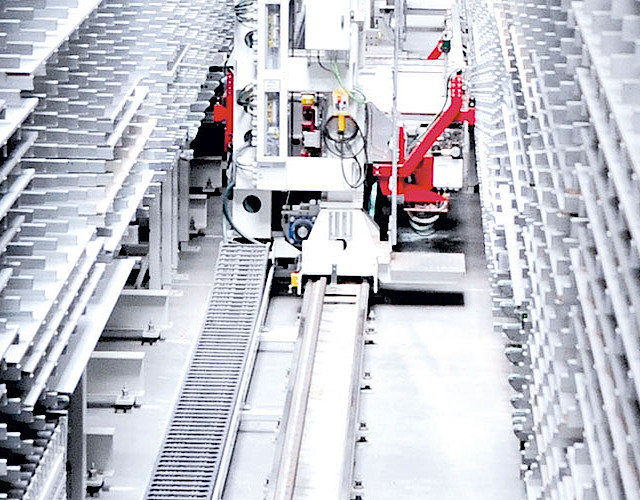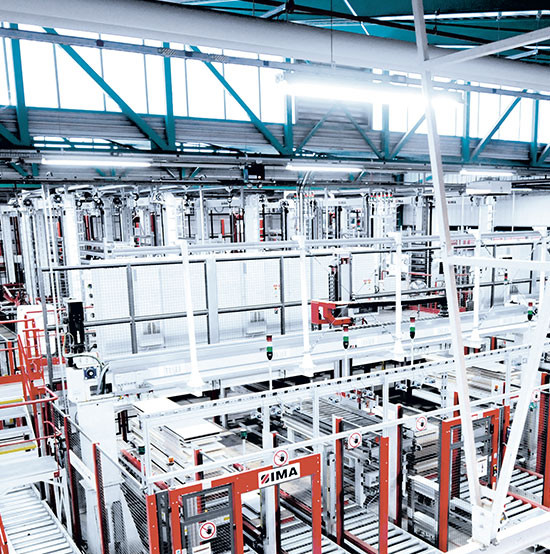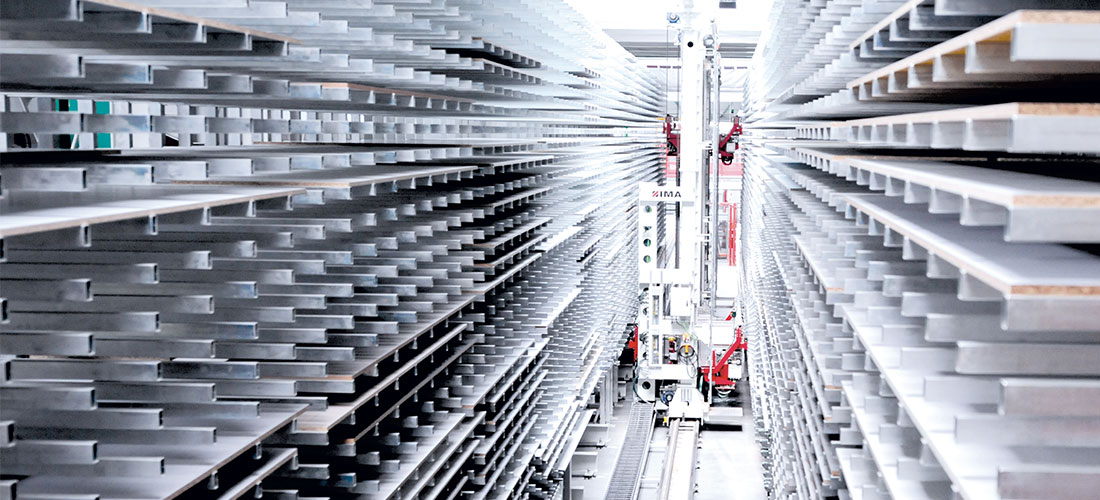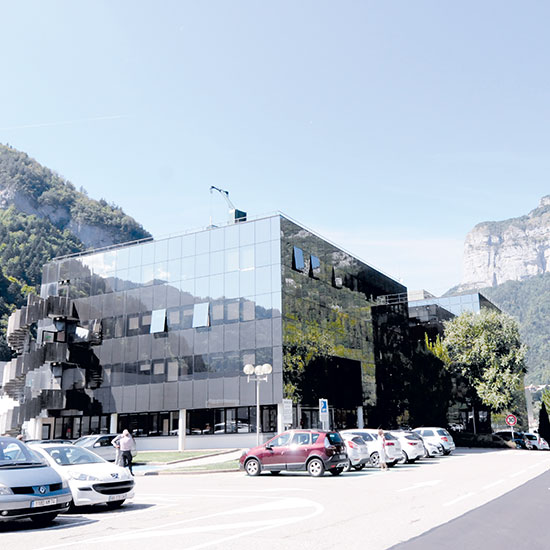
A CLASS OF ITS OWN
For the French kitchen furniture manufacturer FOURNIER HABITAT, IMA Klessmann developed and designed a high-capacity wood processing plant with the dual capability of maximum productivity in diversified small batches or high-volume single component manufacture. The mission was to ensure maximum availability and waste-free production. With new ideas, state-of-the art technologies, system redundancy and a throughfeed rate of 12 000 parts per shift at Fournier, IMA has set a unique benchmark for the industry.
The French family owned and operated company Fournier is one of the two big kitchen manufacturers in France. In the past three years, Fournier expanded its production at the Head Office in Thônes and changed the production completely into custom production. Today the company operates on two edge banding lines, each consisting of four fully interlinked Combima machines and the upstream and downstream panel storage, panel cutting and handling & assembly equipment.
The projects were planned and managed by IMA – both the batch-size-1 production line of 2007 and the new work cell which was commissioned in 2017. “In the past years, we have continually expanded and evolved from a pure kitchen manufacturer to an interior designer. Hence, a flexibilization of our production was urgently required”, the Fournier project managers explain. They were placing great demands on the new work cell: coping with limited available surface area, integrating the new line while the plant was operating, ensuring trouble-free operation and a waste-free production that also offers process security, and – typical of processing plants in France – satisfying the need for equipment redundancy in order to be able to continue production even in the event that a defect or fault occurs. That was really the biggest challenge: providing redundancy taking account of the transport paths in the workcell.
The IMA project designers mastered the challenge by applying proven technology in ways that even the machine designers had not envisaged. The result is an innovative panel cutting and storage concept and two high-volume edge banding lines including buffer storage systems. Today the work cell, which has been operating for two years already, produces up to 12 000 parts per shift, i.e. ten times the normal throughfeed rate in a conventional batch-size-1 workcell. This production rate is a class of its own and has not been reached so far.


INNOVATIVE PANEL CUTTING
In the panel cutting area, IMA used multi-blade rip saws and cross-cuts saws which were originally designed for laminate cutting with setup operations at very long intervals. Adapted to the requirements of kitchen furniture panel cutting, five saws operating in two lines – i.e. main cutting for carcase elements and secondary cutting for special components – achieve a production capacity of 12 000 parts per shift. Each saw can set itself up for new panel sizes within fractions of seconds and accomplish four raw panels per minute in longitudinal cutting – although no packages but only single 2800 mm x 2100 mm half-size panels are fed to the saw.
The third cut is performed by an IMA panel sizing saw of the FBA type. The FBAs have been equipped with a workpiece infeed system that ensures a high production capacity even when panels are processed in transverse orientation and hence comes up to the high throughfeed rate of 25 parts per minute achieved by the upstream saws. Other saw technologies could have been a conceivable solution but would have required significantly more floor space. Through the combination of multi-blade saws and FBAs, IMA has obtained an extremely high throughfeed rate on a given area, which was one of the main reasons why the order for the construction of the new work cell was placed with IMA. In fact, the multi-blade saw for secondary cutting is overdimensioned, but it is necessary due to the need for redundancy in order to replace the rip saw for main cutting if required.

